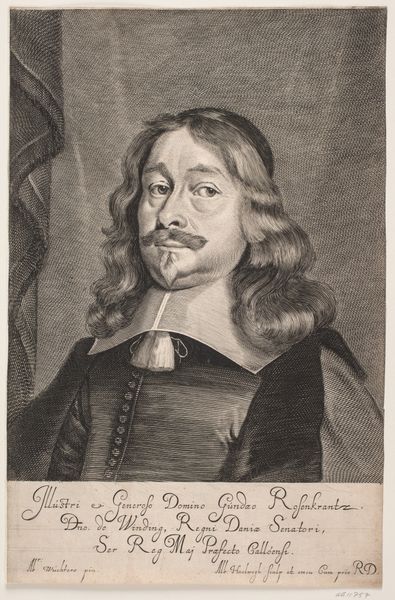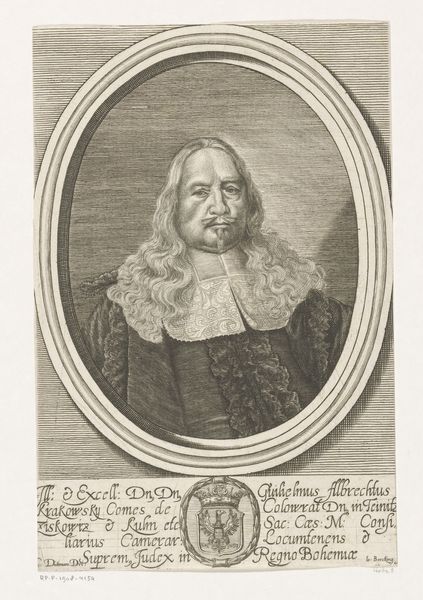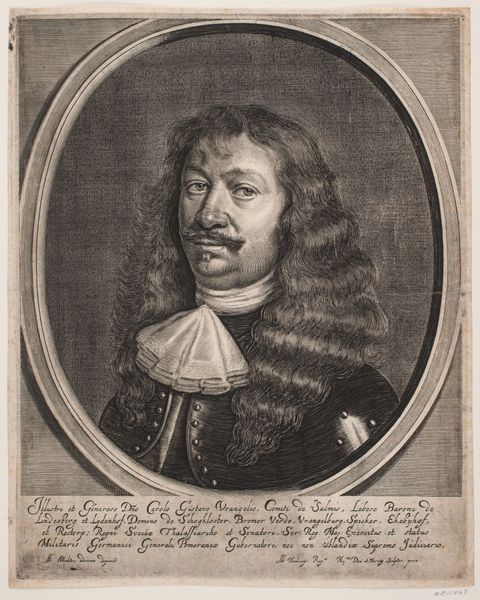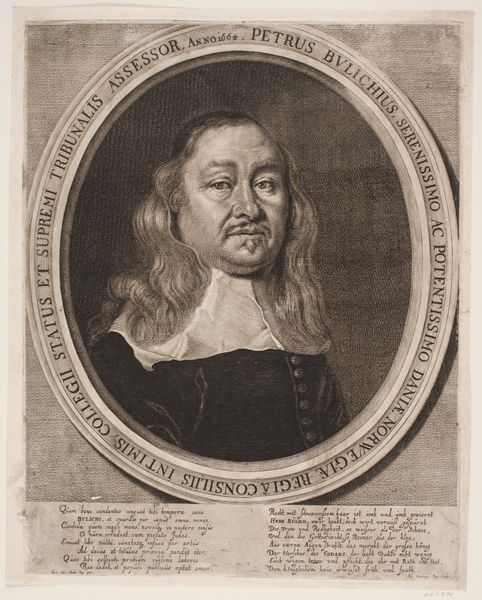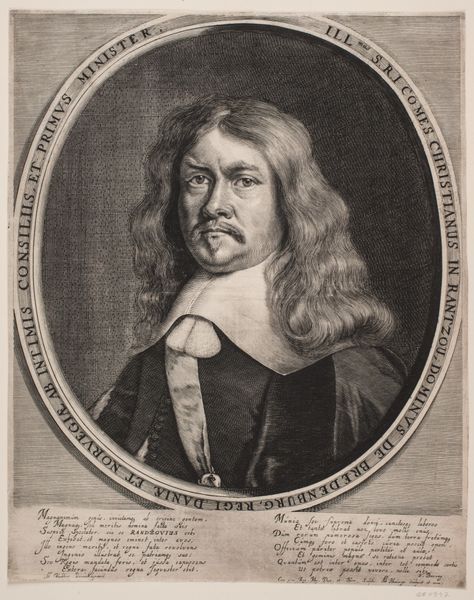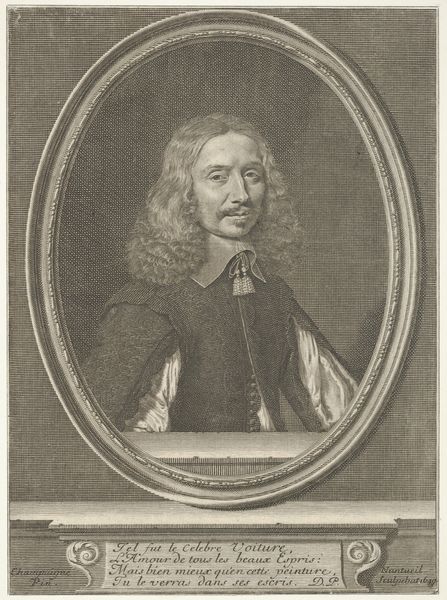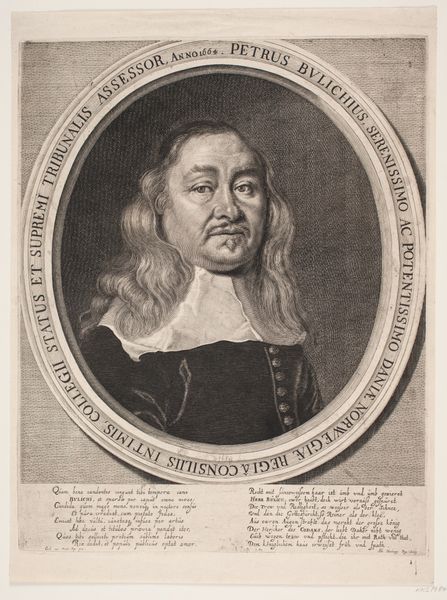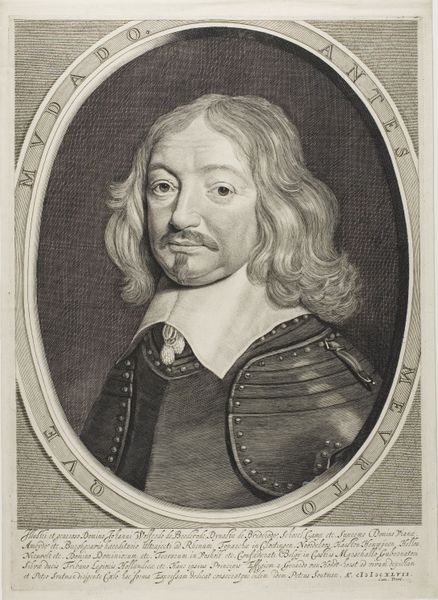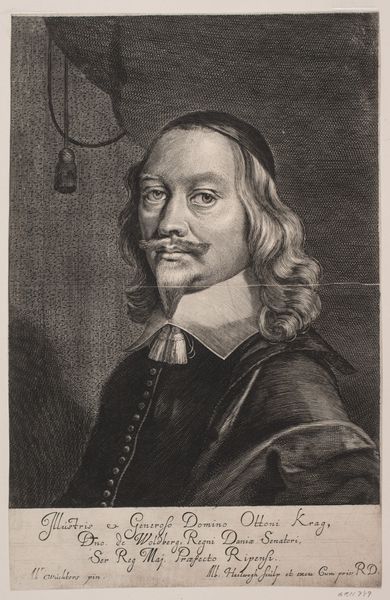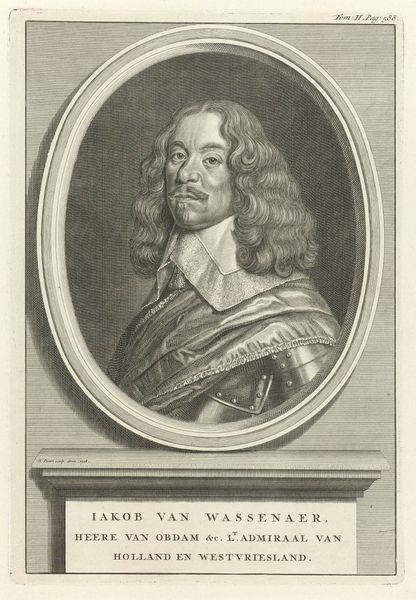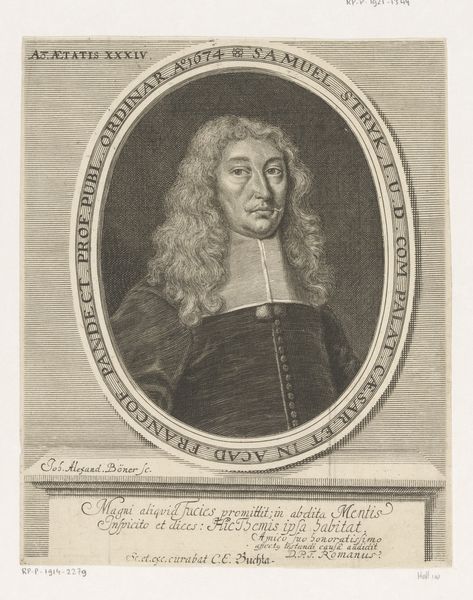
print, metal, engraving
#
portrait
#
baroque
# print
#
metal
#
portrait reference
#
portrait drawing
#
engraving
Dimensions: 329 mm (height) x 217 mm (width) (plademaal)
Curator: This engraving from between 1655 and 1659 by Albert Haelwegh, currently held at the SMK, portrays Gunde Rosenkrantz. A metal engraving capturing a powerful Danish figure. What stands out to you? Editor: The almost unsettling level of detail given the medium. You can practically feel the weight of his garments and the faint texture of his skin rendered meticulously. The mood seems both solemn and assertive, a duality likely intended. Curator: Indeed. Haelwegh was quite prolific in portrait engravings during this period in Denmark. Prints such as these served a vital social function, circulating images of the elite and solidifying their status through readily reproducible imagery. The original function would probably have been closely related to consolidating political ties within Danish aristocracy. Editor: And the imagery is potent. Notice the prominent display of Rosenkrantz's coat of arms, symbols designed to visually convey lineage, power, and authority, reinforcing his place within the hierarchy. His steady gaze exudes authority and ambition—typical for portraying figures of power. It really does communicate a particular type of masculinity favored during the period, all concentrated within those signs of symbolic heritage. Curator: It’s important to consider the context within which these symbols operated. In 17th century Denmark, literacy rates were far lower, and visual symbols held immense weight in public perception. Rosenkrantz's visual representation shaped the perception of his social role and the political power of his noble family in Denmark. Editor: Absolutely, which highlights that an engraving such as this transcends mere documentation. It really serves as a declaration, both public and enduring. A permanent, physical instantiation of identity, status, and, by extension, the ideals to which he presumably subscribed. A controlled, managed symbolic self. Curator: Looking at it from this perspective, we see it’s a complex intersection of art, social power, and individual identity construction. These printed portraits gave political influence, as well as being artistic creations and personal representation. Editor: I agree, seeing both symbolic tradition and the dynamics of societal standing merge adds greater weight to our viewing of this powerful rendering.
Comments
No comments
Be the first to comment and join the conversation on the ultimate creative platform.

